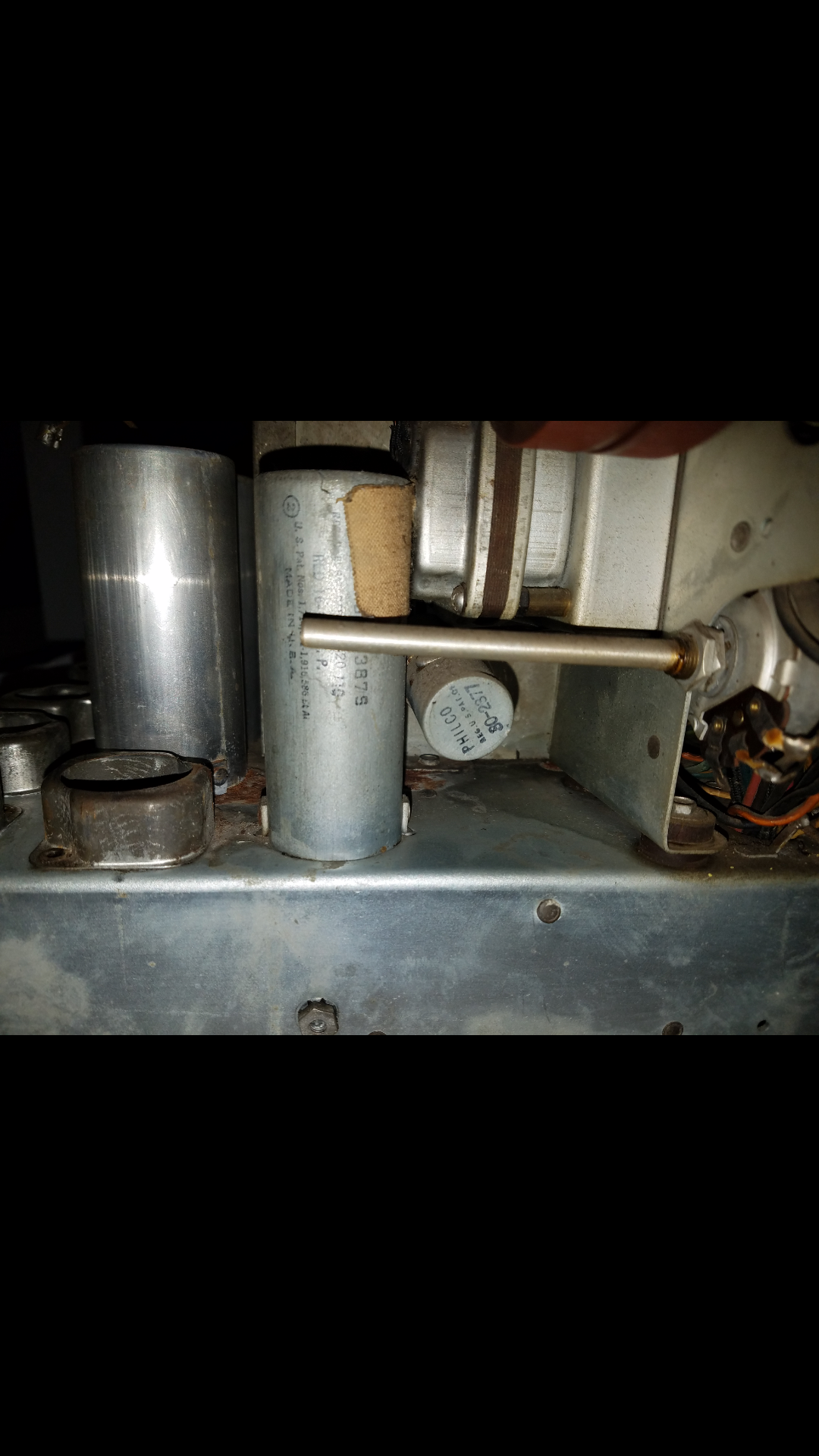10-20-2017, 01:42 AM
Ron,
I really enjoy reading this thread [edit by moderator: the thread referred to here was in the Restoration Notes section] as i just started on my 41-616 tonight still cleaning it, there were mice,yuck. But have been looking over the capacitors and trying to figure out new ones to order, and im stumped.
First what is the voltage on the 30 mfd electrolytic one (philco 30-2377) that was mounted to the bottom of the volume motor? Is it a non polarized one like the 16 mfd? And why did yours wind up being so large is there something really special about it?
Also the why is the 125mfd capacitor number 100 on the parts list 25mfd on the schematic? How can there be such a discrepancy between the parts list and the schematic?
Also on the schematic and parts list a condeser is listed as being in the power plug, but no values are given can you give any insight on this? And also on what fuses to install on power cord?
Finally on my radio theres an unusual added potentiometer clamped to the front of the chassis and wired into the left most pushbutton, any ideas?
Photo shows potentiometer and capacitor attached to motor.
Thanks
Ryan


Please see attached photos.
I really enjoy reading this thread [edit by moderator: the thread referred to here was in the Restoration Notes section] as i just started on my 41-616 tonight still cleaning it, there were mice,yuck. But have been looking over the capacitors and trying to figure out new ones to order, and im stumped.
First what is the voltage on the 30 mfd electrolytic one (philco 30-2377) that was mounted to the bottom of the volume motor? Is it a non polarized one like the 16 mfd? And why did yours wind up being so large is there something really special about it?
Also the why is the 125mfd capacitor number 100 on the parts list 25mfd on the schematic? How can there be such a discrepancy between the parts list and the schematic?
Also on the schematic and parts list a condeser is listed as being in the power plug, but no values are given can you give any insight on this? And also on what fuses to install on power cord?
Finally on my radio theres an unusual added potentiometer clamped to the front of the chassis and wired into the left most pushbutton, any ideas?
Photo shows potentiometer and capacitor attached to motor.
Thanks
Ryan
Please see attached photos.



![[-] [-]](https://philcoradio.com/phorum/images/bootbb/collapse.png)


